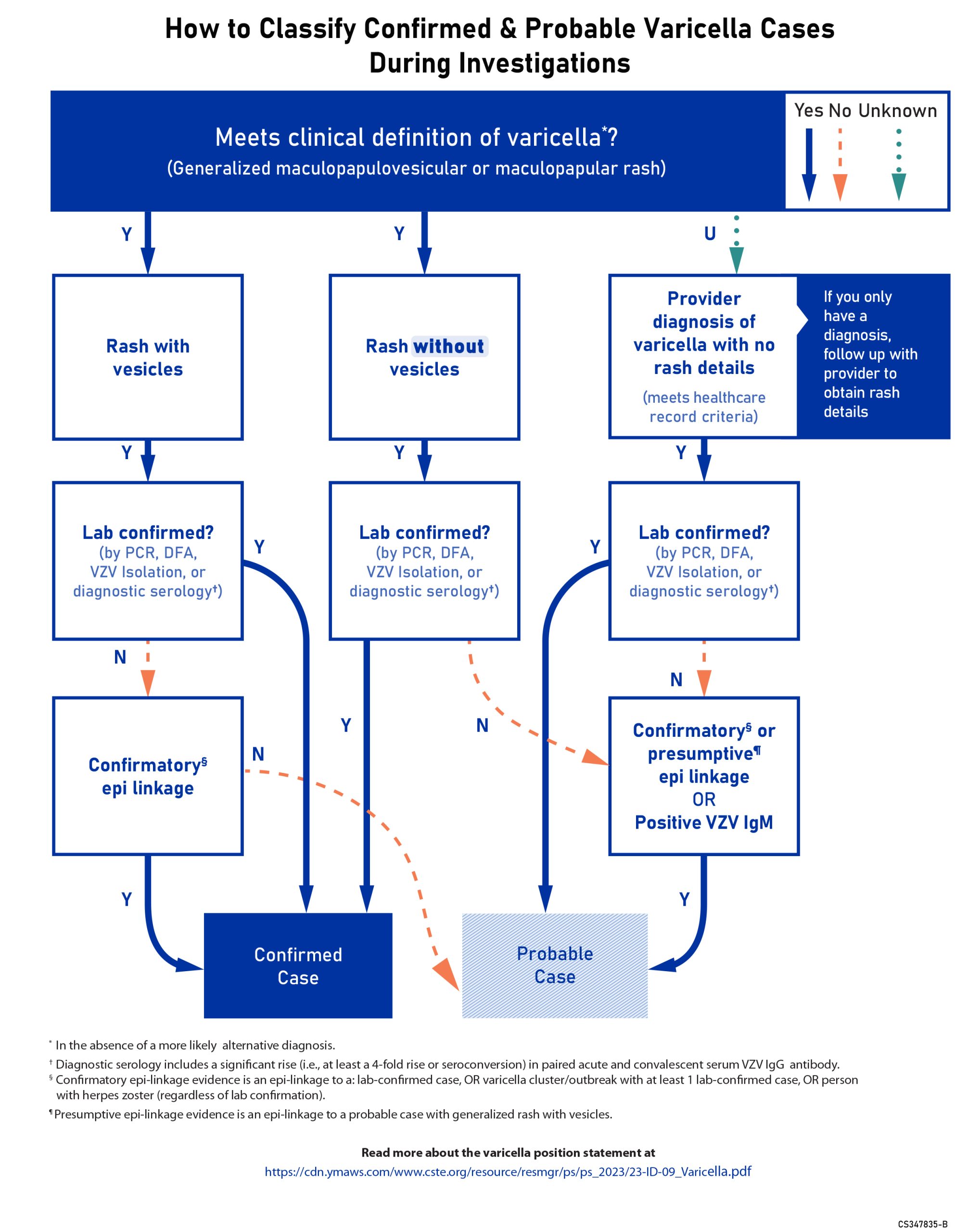
Learn why varicella (chickenpox) surveillance data are needed, the definitions for varicella clinical cases, how to classify cases as probable or confirmed, and how to report varicella deaths.

In 2002, the Council of State and Territorial Epidemiologists (CSTE) recommended that states establish case-based surveillance for varicella by 2005. All states were encouraged to conduct ongoing varicella surveillance to monitor vaccine impact on morbidity. States are encouraged to report varicella cases to the National Notifiable Diseases Surveillance System (NNDSS) via the National Electronic Disease Surveillance System (NEDSS).
As of 2020, 39 states have been conducting case-based varicella surveillance. For state-specific reporting requirements, contact the state health department.
The State Reportable Conditions Assessment (SRCA) is a web-based assessment of reporting requirements for conditions that must be reported by clinicians, laboratories, hospitals, and others to public health according to jurisdictional laws.
The following case definitions were approved by CSTE for varicella cases in June 2023 and for varicella deaths in 1998. All case definitions for varicella cases and deaths can also be found on the NNDSS website.
In the absence of a more likely alternative diagnosis:
Refer to the CSTE position statement or follow the flowchart below for the criteria needed to classify a case of varicella.

In 1998, CSTE recommended that varicella-related deaths be placed under national surveillance. As of January 1, 1999, varicella-related deaths became nationally notifiable to CDC.
Varicella deaths can be identified through death certificates, which may be available through state vital records systems. In states using electronic records, certificates may be more readily available soon after a person dies. State health departments may also request that local health departments, providers, and hospitals report varicella deaths that occur in their community.
Since varicella is vaccine preventable, all deaths due to varicella should be investigated. Investigations may provide insight into risk factors for varicella mortality and may help identify missed opportunities for and barriers to vaccination.